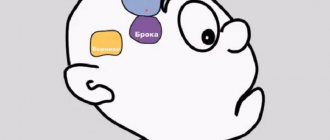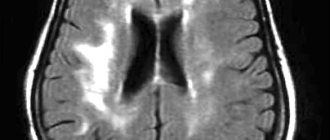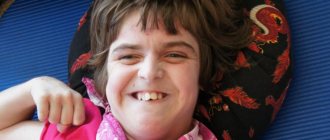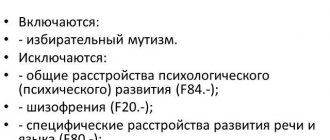Causes
Among the causes of stuttering in children, predisposing and provoking factors are distinguished. Predisposing factors are disorders, most often of an organic nature, that a child has from birth. If provocateurs join them, then a child of preschool age or primary school age will develop a pathology.
Predisposing factors:
- heredity - the presence of speech disorders in close relatives, which may indicate weakness of the articulatory apparatus, muscles and ligaments, underdevelopment of the respiratory system, congenital anomaly;
- oxygen starvation in the prenatal period and during childbirth, caused by pathology on the part of the mother (anemia, diet, threat, polyhydramnios, oligohydramnios), placenta and umbilical cord (immature placenta, premature detachment, umbilical cord entanglement);
- prematurity, in which almost all systems are immature;
- birth trauma, especially if it is not diagnosed and the baby has not received treatment;
- Features of the nervous system - hyperexcitability.
The provoking factors are as follows:
- emotional shock - severe fright, fear, anger, first visit to kindergarten;
- chronic stress due to conflicts with peers, in children's groups, ridicule, lack of friends;
- unfavorable psychological background in the family, physical punishment, constant scandals, lack of attention from parents;
- overprotection, lack of personal space, inability to express one’s opinion due to adult pressure;
- excessive demands on the child from parents, educators, teachers;
- excessive passion for computer games;
- the presence of another person around the child who stutters;
- traumatic brain injury, even of a mild degree;
- previous meningitis, encephalitis, encephalopathy.
Causes of stuttering
There is no consensus in the scientific community about the causes of stuttering. Various specialists in different eras adhered to their hypotheses on this issue. In the 16th century, a Spanish linguist put forward the following point of view: the defect occurs from the fact that an already matured baby sucks milk from the mother’s breast. To cure the disease, it is advisable to wean the child from the breast, forcing him to eat on his own.
In the 19th century, the scientist Lagusen suggested that logoclonia is caused by feelings of shame, anger, fear, and fear.
I.A. Sikorsky was the first to point out the occurrence of a defect in early childhood during the development of speech.
Modern science divides the causes of logoclonia into predisposing and provoking ones.
Predisposing factors form an impressive group. Among them:
1.
Age characteristics – 2–6 years, when speech is in the developmental stage, becoming vulnerable due to incomplete maturation. 2. Gender characteristics - boys are more likely to be affected by the disorder than girls. 3. damage to the central nervous system :
- pathological course of pregnancy - infections, fetal hypoxia;
- premature birth;
- birth injuries;
- asphyxia;
- prematurity;
- infectious diseases suffered in childhood - meningitis, encephalitis;
- measles, whooping cough, typhus, rickets, helminthic infestations, endocrine disorders;
- ENT diseases
- GM injuries – bruises, TBI.
4. Heredity . Inheritance from parents of features of the nervous system - hyperexcitability, acceleration of motor and speech activity. Inheritance can occur over several generations. Moreover, men who stutter have a lower risk of having offspring with this disorder than women who stutter. In men with the disorder, the likelihood of having sons with the defect is 20%, and daughters - 9%. For women: sons – 35%, daughters – 17%. 5. Features of speech development . At the time of the formation of phrasal speech, children are normally characterized by some deviations. Iterations may appear - repetition of syllables, sounds, emboli (sounds, words without meaning). This is normal because poor speech breathing limits the ability to speak ideally complete sentences. Problems begin when unfavorable environmental factors interfere with the development of speech activity.
Main signs of stuttering
Physically, children with stuttering are no different from their peers. Speech in a calm environment can be almost normal. And in moments of strong excitement, fear, rage, anxiety, the voice falters, stops, and letters, syllables, and words are repeated. The baby stretches out sounds and syllables.
Speech is generally irregular and uneven. In severe cases, the child cannot be understood.
The more the baby tries to say something, the more worried he is and the more pronounced the speech disorder is. Sometimes the pathology is accompanied by tightness in the chest, a feeling of spasm in the throat, and respiratory arrest. This condition can be described as convulsive: the tongue seems to stick to the hard palate, the lips close.
If the cause of stuttering is organic damage to the nervous system, then speech difficulties will be permanent.
For children, this condition is a huge stress. Because of fear, they try not to use words that are difficult to pronounce. Speech becomes clogged with parasites “uh”, “well”, “here”, “there”, “this”, “yes”, “so”. They communicate less and withdraw into themselves. In adolescence, this leads to complexes and serious psychological problems.
The problem is aggravated by nervous tics, enuresis, aggressiveness, tearfulness, and fear of the dark. Over time, psychosomatic diseases of the gastrointestinal tract, heart and blood vessels and other systems may appear.
Therefore, it is very important to contact doctors in time and start treatment.
Causes of stuttering
There are external and internal causes of stuttering.
Internal reasons:
- Unfavorable heredity. If parents have a stutter or even a fast pace of speech, a mobile, excitable psyche, then this type of weakened nervous system is transmitted, which then contributes to the occurrence of stuttering.
- Pathology during pregnancy and childbirth. These are factors that can adversely affect the child’s brain structures responsible for speech and motor functions. In particular, any chronic pathology in parents, illness of the mother during pregnancy.
- Organic lesions of the nervous system in traumatic brain injuries, neuroinfections.
- Diseases of the speech organs (larynx, nose, pharynx).
External reasons:
- Functional causes are much less common, and again there must be an organic predisposition, a certain type of nervous system that cannot withstand certain loads and stress. Fear, serious illnesses in the period from 2 to 5 years, which cause weakening of the body and reduce the stability of the body’s nervous system. It is also an unfavorable family environment. Stuttering in children also appears as a result of overly strict upbringing and increased demands on the child. Sometimes parents want to make geniuses out of their children, forcing them to learn long poems, speak and memorize difficult words and syllables. All this can lead to impaired speech development. Stuttering in children can increase or decrease. Stuttering becomes more severe if the child is overtired, catches a cold, violates the daily routine, and is often punished.
- Dissonance between the hemispheres of the brain, for example, when a left-handed child is retrained to be right-handed. According to the World Health Organization, about 60-70% of retrained left-handers stutter.
- Imitating a family member or another child who stutters.
- Lack of parental attention during the formation of speech, and, as a result, rapid speech and skipping of syllables.
Types of stuttering
There are several types of stuttering:
Depending on the mechanism of occurrence, pathology can be respiratory, vocal and articulatory-phonetic.
- With the respiratory or breathing type of speech delay, the pathology is associated with a lack of air. Because of this, the baby cannot finish a phrase or word while exhaling. During a conversation, his face becomes tense or distorted;
- Vocal stuttering is caused by involuntary closure of the vocal cords. Occurs most often with vowel sounds;
- The articulatory-phonetic form is characterized by spasm of the facial muscles. Outwardly, this is expressed by opening the mouth and contracting the lips.
Due to their occurrence, there are 2 forms:
- neurotic stuttering (logoneurosis) - associated with acute or chronic stress in children 2–6 years old, with no organic damage to the nervous system;
- a neurosis-like form occurs in children aged 2–3 years as a result of damage to the speech center of the brain due to injury or illness.
As you can see, stuttering most often begins in preschoolers. This is the most vulnerable age.
According to clinical manifestations there are:
- tonic form - hesitation, prolongation of sounds, pauses;
- clonic form - repetition;
- mixed form.
Provoking factors for stuttering
Inducing factors of a defect are considered to be those that cause a disorder only under a “favorable” combination of circumstances and in the presence of predisposing causes. If the necessary conditions are not available, then provocateurs are not dangerous for the child.
Provoking factors include:
- acute psychological trauma, provoking a severe shock - an experience of horror, fear. Fear plays a special role. Positive emotions, along with negative ones, can also provoke logoneurosis;
- chronic psychological stress. Usually, chronic psychotraumatization is caused by an unfavorable atmosphere in the family or a bad relationship with the school teacher, since children spend a significant part of their time at school;
- false stuttering - imitation of relatives with a similar defect;
- retraining left-handed children;
- learning multiple languages at an early age. We are talking about foreign languages imposed on a child at 2-3 years old. During this period, children have poor command of their native language. Learning a foreign language puts additional stress on the child’s psyche, causing nervous strain;
- the same overvoltage can also be caused by gadgets that modern 2- and 3-year-old children are overly interested in;
- errors in the formation of speech - a large information load on the child, imposing on him material that is not age appropriate (abstract concepts, complex figures of speech).
Depending on the influencing factor, laloneurosis can be neurotic and neurosis-like.
Neurotic laloneurosis arises in conditions of psychotrauma. The nervous system of such children is characterized by increased emotionality and vulnerability. Children sleep poorly, are anxious, and impressionable. Combining speech exercises with music exercises does not help correct the situation. The overload of the baby and the inadequate attitude of the parents aggravate the problem.
Neurosis-like stuttering occurs in early childhood, at 2–3 years, against the background of organic brain damage due to trauma, infections, or pathological childbirth. Speech in children becomes monotonous, the frequency of convulsive speech phenomena depends on physical and mental fatigue.
Severity
When assessing the severity of the pathology, the severity of symptoms, their impact on the child’s communication with other people, and the presence of concomitant disorders are taken into account.
Highlight:
- mild degree - it is characterized by rare, unexpressed hesitations that do not interfere with talking and communicating. But even with this degree, parents need to contact a specialist in order to begin correction in a timely manner before the deviations become entrenched;
- medium - hesitations are more noticeable and make communication more difficult;
- severe - speech impairments are pronounced, they make communication almost impossible. Other symptoms also appear.
If stuttering is not eliminated, the cause of the pathology is not eliminated, then it gradually progresses, and very quickly.
Treatment of stuttering in children
Getting rid of stuttering requires patience and persistence. It is important to follow the recommendations of a speech therapist in order to develop correct speech skills and eliminate pathology. But we also don’t recommend overdoing it: if your baby is sick or doesn’t feel well, postpone classes. In this state they will be of no use.
Treatment of stuttering in children is complex, using several therapy methods. Below we will talk about them in more detail.
Working with a speech therapist
Treatment of stuttering in children by a speech therapist can be carried out in a kindergarten, in a community clinic or in specialized institutions.
At the first stage, a speech therapist or speech pathologist conducts a survey and examination, identifying the cause of stuttering. Examinations are prescribed: MRI, electroencephalography or rheoencephalography. After this, an individual correction scheme is drawn up. Parents need to follow this plan to get rid of stuttering.
Working with a speech therapist is the key to successful correction. Even if you practice at home on your own, you need to regularly see a specialist. He evaluates the dynamics and, if necessary, adjusts the lesson plan or supplements them.
Working with a psychologist
To help get rid of stuttering, a psychologist or psychotherapist conducts classes in a playful way. The purpose of such activities is relaxation, distraction, and development of emotional stability. Both individual sessions and group work are possible.
When the cause of speech impairment is conflicts in the family, stuttering can be eliminated only by improving relationships within the family. In such cases, psychotherapy is also indicated for parents. It is necessary to create a calm environment and improve relationships between all family members. It is important that the child knows and feels that he is loved and appreciated.
Drug treatment
Drug treatment of stuttering in children is aimed at normalizing the neurological state and emotional background. Prescribe sedatives and drugs to relieve muscle spasms.
Usually vitamin complexes are also included in the treatment regimen. Folk remedies are also effective: herbal decoctions, baths, inhalations. Remember that any medicine is prescribed only by a neurologist, even herbal medicines. He takes into account the results of the examination and the cause of the child’s stuttering. Self-medication is fraught with worsening of the condition.
In complex cases, when there is damage to the central nervous system, hospital treatment or the prescription of other groups of drugs may be necessary.
Hardware techniques
Physiotherapeutic methods are used. Electrosleep and electrophoresis with sedatives are effective. You need to complete the course of treatment completely. Most often, several of these courses are prescribed, with breaks.
Computer programs have also been developed to help eliminate stuttering. Check with your speech therapist to see if they are appropriate for your situation. And remember that no program can replace comprehensive measures and independent work.
Speech therapy massage
Speech therapy massage plays an important role. It relaxes those muscles that tighten when pronouncing phrases and relieves spasms of the speech apparatus, thus helping to eliminate stuttering.
A therapeutic massage of individual parts of the body is also carried out: head, neck, shoulders, chest. Various techniques are used, including acupressure. In this case, the specialist influences the speech center through reflexogenic zones.
One of the advantages is the ability to perform at home. The first sessions are conducted by a specialist, showing the movements and correct placement of hands to the parents. In the future, the mother or other relatives perform the massage themselves. This is convenient when several courses of treatment are indicated.
Breathing exercises
The technique allows you to correct shallow, incorrect breathing and normalize the tone of the muscles involved in articulation. After classes, a preschooler masters diaphragmatic breathing, normalizes speech breathing, learns to regulate the respiratory rhythm and rate of speech, and strengthens the muscles of the anterior abdominal wall.
The specialist also teaches parents this technique so that they can perform the movements at home, since regularity of exercises and continuity of the course of therapy are important.
There are various techniques, for example, you can use Strelnikova’s exercises. They help create the correct air flow needed to pronounce words and phrases. The exercise complex is performed in various body positions, at rest and during movement. Gradually the tasks become more difficult.
You also need to train your voice. Logorhythmics classes are useful. You can get rid of stuttering by reading poetry out loud or singing it. You can even sign up for choral singing. This trains your voice and breathing.
At home, you can invite your child to blow soap bubbles, blow a cotton ball off the table, or blow up regular balloons. It is useful and fun to make boats and race to “drive” or blow them from one end of the basin to the other. Try practicing with toy wind instruments: pipes, trombone, saxophone.
Stuttering in children
The main symptoms of stuttering in children include speech convulsions, disorders of physiological and speech breathing, accompanying movements, speech tricks and logophobia.
When stuttering, children experience hesitation when trying to start speaking or directly in the process of speaking. They are caused by spasms (involuntary contraction) of the speech muscles. Speech spasms can be tonic or clonic in nature. Tonic speech spasms are associated with a sharp increase in muscle tone in the lips, tongue, and cheeks, which is accompanied by the inability to articulate and a pause in speech (for example, “t-raw”).
Clonic speech spasms are characterized by repeated contractions of the speech muscles, resulting in the repetition of individual sounds or syllables (for example, “t-t-grass”). Children who stutter may have tono-clonic or clono-tonic seizures. According to the place of occurrence, speech convulsions can be articulatory, vocal (phonational), respiratory and mixed.
Breathing during stuttering is irregular, shallow, thoracic or clavicular; Discoordination of breathing and articulation is noted: children begin to speak while inhaling or after a full exhalation.
The speech of children with stuttering is often accompanied by involuntary accompanying movements: twitching of the facial muscles, flaring of the wings of the nose, blinking, swaying of the body, etc. Quite often, people who stutter use so-called motor and speech tricks aimed at hiding their hesitations (smiling, yawning, coughing, etc. ). Speech tricks include embolophrasies (the use of unnecessary sounds and words - “well”, “this”, “there”, “here”), changes in intonation, tempo, rhythm, speech, voice, etc.
Difficulties in speech communication cause logophobia (fear of speech in general) or sound phobia (fear of pronouncing individual sounds) in children with stuttering. In turn, obsessive thoughts about stuttering further worsen speech problems in children.
Stuttering in children is often accompanied by various kinds of autonomic disorders: sweating, tachycardia, blood pressure lability, redness or pallor of the skin, which intensify at the time of speech convulsions.
Neurotic stuttering
Neurotic stuttering in children is based on strong traumatic experiences, so speech impairment occurs acutely, almost instantly. In this case, parents, as a rule, accurately indicate the time of the onset of stuttering in the child and its cause. Neurotic stuttering usually occurs between 2 and 6 years of age, i.e., at the time of development of the disorder, children have extensive phrasal speech.
Children with neurotic stuttering experience a decrease in speech activity, pronounced logophobia and fixation on difficult sounds; respiratory-vocal convulsions predominate. Sound pronunciation, as a rule, is impaired, but the lexical and grammatical side develops normally (FFN occurs). Children often accompany their speech by flaring the wings of the nose and accompanying movements. The nature of the course of neurotic stuttering in children is wavy; Speech deterioration is provoked by traumatic situations.
Neurosis-like stuttering
In the case of neurosis-like stuttering, which occurs against the background of organic damage to the central nervous system in the perinatal or early period of child development, the disorder develops gradually, gradually. There is no obvious connection with external circumstances; Parents find it difficult to determine the cause of stuttering in children. Neurosis-like stuttering in children appears from the moment speech begins or at the age of 3-4 years, i.e. during the period of formation of phrasal speech.
The speech activity of children is usually increased, but they are not critical of their defect. Speech hesitations are caused primarily by articulatory spasms; speech is monotonous, inexpressive, the pace is accelerated; sound pronunciation is distorted, the lexico-grammatical aspect of speech is disrupted (OHP occurs). Children with neurosis-like stuttering have impaired general motor skills: their movements are clumsy, constrained, and stereotyped.
Characterized by sluggish facial expressions and poor handwriting; Dysgraphia, dyslexia and dyscalculia often occur. The course of neurosis-like stuttering in children is relatively constant; Speech deterioration can be caused by fatigue, increased speech load, and somatic weakness. A neurological examination reveals multiple signs of central nervous system damage; according to EEG data - increased convulsive readiness.
Prevention of stuttering
Prevention consists of a set of measures aimed at eliminating risk factors:
- Formation of a favorable psychological background in the family, refusal of excessive guardianship, demands on the part of parents towards their child, care and a friendly attitude towards him. Remember that the basis of your actions should be love, and not the desire to make your baby a prodigy;
- Elimination of stress, emotional turmoil;
- Refusal of physical punishment;
- Developing the right daily routine for the whole family, and not just for the child;
- Complete and sufficient rest;
- A balanced diet with sufficient vitamins and microelements;
- Refusal to watch detective stories, horror films, science fiction films and programs. Instead, watch good cartoons, fairy tales and programs about nature and animals;
- Regular examinations by specialists;
- Treatment of concomitant pathology.
Tips for parents: how to treat stuttering in a child
Here are some more tips for parents to make the correction successful:
- Watch your speech - don’t burr, don’t stutter on purpose. Speak correctly, pronouncing sounds smoothly, without acceleration or deceleration;
- If there is a person with a speech disorder in the child’s environment, limit their communication if possible;
- Don’t scold your child for failures, don’t focus on them. It’s better to distract him with something: a game, drawing together. Ask him to help around the house - let him know that he is valued and needed;
- Don’t focus on speech development—direct your attention and that of your baby to other areas: physical activity, writing. Perhaps your child has some talents - help him discover them;
- But successes must be celebrated, but also without exaggeration. Don't overpraise your child;
- Remember that there are no perfect people in the world. Even many of the stars we admire and envy a little have disabilities or health problems. But this did not stop them from achieving success. Therefore, believe in your child and support him in everything. This will help him a lot;
- No matter how much you want to achieve results faster, do not overload your child with exercises and activities. Monitor his well-being, his disposition to exercise.
With timely treatment of stuttering in children and effort on the part of the child and his parents, according to various authors, the prognosis is favorable in 70–80% of cases or more. We wish you that your treatment is successful too.
Why does a child start to stutter - 13 reasons
Stuttering, or logoneurosis, is a disturbance in the fluency of speech when the pronunciation of sounds is accompanied by muscle spasms.
As a result, hesitations appear, syllables and sounds are repeated and stretched out. A child who stutters has difficulty pronouncing words, and his speech is often understandable only to those close to him. In children, stuttering usually appears between the ages of 2 and 5 years, when speech is actively developing. At this age, hesitations, slurred sounds and even words are typical. Over time, this phenomenon goes away on its own as the child begins to speak better. If the stuttering persists and even begins to appear more often, it is necessary to urgently contact a child psychiatrist and speech therapist. To prescribe effective treatment, it is extremely important to correctly determine the cause of stuttering.
Causes of stuttering in children
If the baby’s nervous system is weakened initially, then the reasons for the development of stuttering include the following:
- heredity;
- birth traumatic brain injury and asphyxia;
- severe pregnancy with prolonged toxicosis;
- frequent colds in infancy, diseases of the pharynx, nose, larynx;
- severe infectious diseases: measles, whooping cough, typhus, rickets; in addition, stuttering can cause infestation with worms and exhaustion of the body.
All of these factors negatively affect the baby’s already weakened nervous system and have a bad effect on the development of speech centers. Neurological examination of such children usually shows increased intracranial pressure, convulsive readiness, and changes in reflexes.









